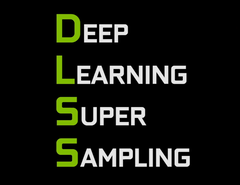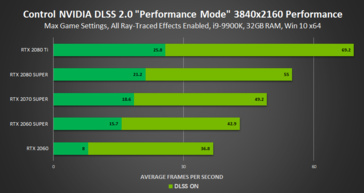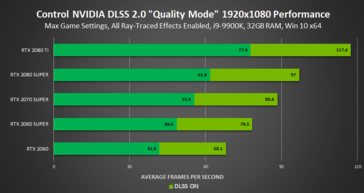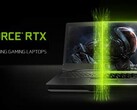Apart from being the first gaming chips to integrate hardware ray tracing support, the RTX 2000 GPUs also introduced the deep learning super sampling (DLSS) technology based on the A.I.-oriented Tensor cores. Nvidia tried to apply its ever-expanding A.I. programming expertise to the gaming sector, as DLSS was supposed to improve image quality and performance through temporal anti-aliasing techniques. Needless to say, DLSS is currently a hit or miss feature and game developers remain quite reluctant towards implementing this feature since it has daunting requirements involving the creation of separate neural network models for each game at all supported resolutions. Now that Nvidia technically postponed the reveal of their next gen GPUs, the green team is looking to provide alternative ways to keep the fans happy and one solution is the introduction of DLSS 2.0.
Nvidia acknowledges that DLSS 1.0 relied on the premise that video games are deterministic, thus making every element in a game predictable. This might be true for A.I.-controlled characters to some degree, but visual elements like particles tend to be too random. It is quite hard to train a neural network to account for all these random occurrences, plus this needs to be done on a per-game basis. For DLSS 2.0, Nvidia is introducing a single generic neural network that can adapt to any game. The new approach involves the use of real-time motion vectors that are provided in the game engine itself, making it behave like a temporal upscaling solution.
Among the benefits of this new approach is the ability to upscale frames by up to 4 times the sample resolution (DLSS 1.0 only allowed for 2 time upscales). As a result, the algorithm offers more scaling options between 1080p and 4K, and gamers will be able to choose between performance, balanced and quality modes.
Still, the new version also introduces new hurdles for game developers, as they now need to provide the motion vector information. Depending on the popularity of the game engine, this may have various difficulty degrees, so now, even if the neural network training aspect is gone, the per-game implementation is still a requisite.
As far as performance gains over the first version are concerned, Nvidia admits that the Quality mode on DLSS 2.0 is a bit slower, yet the image quality should be improved and the performance should still be better over the non-DLSS mode.
Nvidia will continue to aggressively promote this feature as a better alternative for AMD’s Radeon Image Sharpening solution. The latest GeForce drivers already provide support for DLSS 2.0 in games like Deliver us the Moon, Wolfenstein: Youngblood, Control and MechWarrior 5.0, which are expected to get patches in the coming weeks. Additionally, Nvidia is ready to release full DLSS 2.0 integration for Unreal Engine 4.
I first stepped into the wondrous IT&C world when I was around seven years old. I was instantly fascinated by computerized graphics, whether they were from games or 3D applications like 3D Max. I'm also an avid reader of science fiction, an astrophysics aficionado, and a crypto geek. I started writing PC-related articles for Softpedia and a few blogs back in 2006. I joined the Notebookcheck team in the summer of 2017 and am currently a senior tech writer mostly covering processor, GPU, and laptop news.
> Expert Reviews and News on Laptops, Smartphones and Tech Innovations > News > News Archive > Newsarchive 2020 03 > Nvidia announces DLSS 2.0 to appease fans over next gen GPU delays
Bogdan Solca, 2020-03-24 (Update: 2024-08-15)











